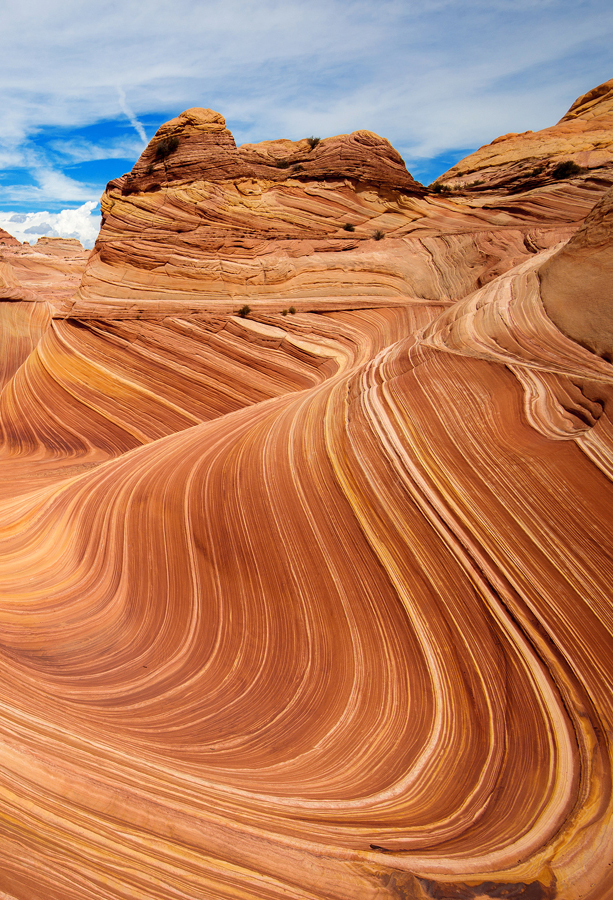Some of the most memorable landmarks in the U.S. are more than just visually stunning — sometimes, they’re just downright weird. Of course, strangeness and beauty are not mutually exclusive, and often, a geological rarity can also cut a striking image. From a seemingly nondescript pile of rocks in Pennsylvania to the ancient badlands of New Mexico, discover the interesting histories and unique geology of seven of America’s most intriguing earthly oddities.
The Wave – Arizona
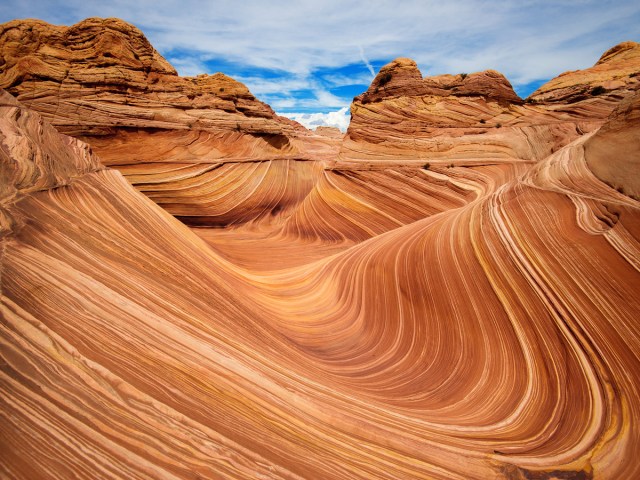
Arizona certainly has no shortage of astonishing natural wonders — it is the Grand Canyon State, after all. But on the slopes of Arizona’s Coyote Buttes, an area of mesmerizing swirling color patterns and unusual striations in the Navajo Sandstone awaits. Unfortunately, this surreal formation is no longer a secret: These days, access to the Wave is highly restricted, with only a limited number of permits issued per day to preserve the site’s natural rock.
The six-mile hike through the Vermillion Cliffs National Monument — part of the 112,500-acre Paria Canyon-Vermilion Cliffs Wilderness on the border of Arizona and Utah — is more than worth the effort, though. Along with the Wave, you’ll come across the strange rock formations of the Boneyard and a stunning stone structure known as the Melody Arch.
Ringing Rocks Park – Pennsylvania

At first glance, a pile of rocks doesn’t exactly evoke any whimsical wonder, but in Pennsylvania’s Ringing Rocks Park, there’s more than meets the eye. Miraculously, when struck, these sonorous stones seem to “sing.” Located 45 miles north of Philadelphia in the village of Upper Black Eddy, the famous field of boulders emits ringing metallic tones that resemble chiming bells when hit with a hammer or another hard object.
Scientists believe the unique mineral composition of the rocks — particularly large amounts of iron — is what makes them ring. The tones that come from these mysterious stones are actually lower than the human ear can hear; it’s only when the sound waves interact with each other that they’re audible. Plus, the eight-acre Ringing Rocks Park offers much more than the boulder field: There are also hiking and biking trails, as well as Bucks County’s largest waterfall, High Falls, just five minutes away from the geological wonder.
Devils Postpile – California

Although it appears to be a human-made wonder, the Devils Postpile is instead a rare geological formation. Made of hexagonal basalt columns, the landmark’s stunningly symmetrical appearance was formed by the cooling and contracting of lava flows around 100,000 years ago. The scale of the site has eroded over time, but some of the stones still rise as high as 60 feet.
In 1911, Devils Postpile was under threat of demolition in order to build a dam, but President William Howard Taft proclaimed the site a U.S. national monument to protect it from any future development. The mosaic-like appearance of the formation stands in stark contrast to the surrounding Sierra Nevada mountains. During the summer months, when the monument is open to the public, visitors can also enjoy a short 2.5-mile walk to the nearby Rainbow Falls.
Bisti Badlands – New Mexico
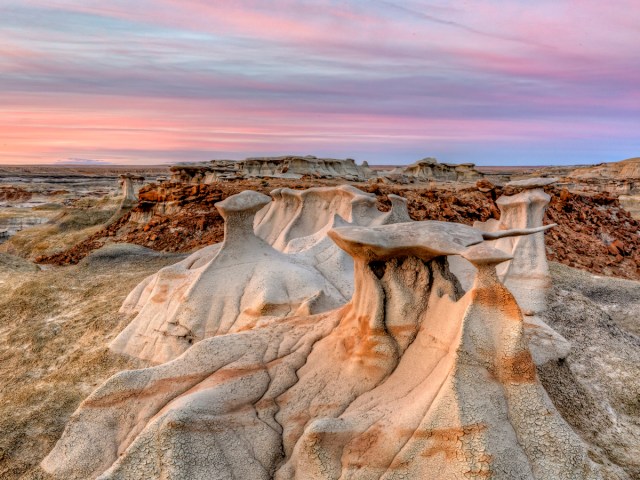
It’s obvious from the first sight of New Mexico’s Bisti Badlands that this alien-like landscape is significant. The expansive 45,000-acre area, also known as the Bisti/De-Na-Zin Wilderness, features surreal hoodoos and other eroded sandstone structures, which are the result of ancient river and swamp deposits that also make it one of the most fossil-rich places on Earth.
Bisti’s bizarre labyrinth of undulating hills offers astonishing sites at every turn. Some of the best-known stone structures go by names such as “Cracked Eggs” and “Stone Wings.” Bisti is a Navajo word meaning a “large area of shale hills,” and De-Na-Zin comes from the word for “standing crane.”
Painted Hills – Oregon
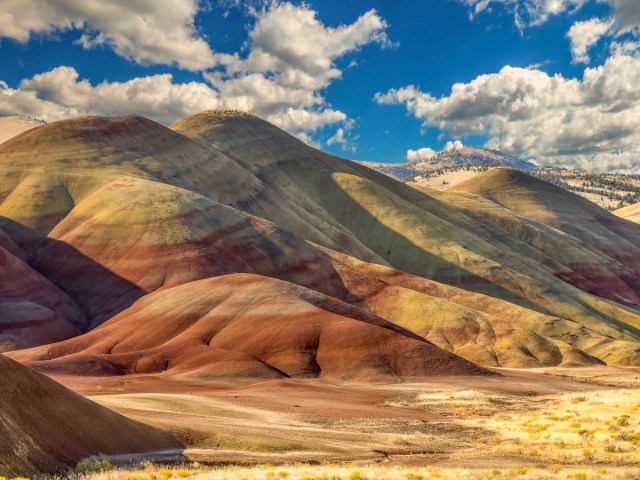
The Painted Hills are more than a mind-bending natural masterpiece. Millions of years of history make up the unexpected multi-colored layers of this ancient landscape in central Oregon. Located in the John Day Fossil Beds National Monument, the rainbow-hued hills started as volcanic fallout and continued to form over millions of years of climatic changes and geological processes.
The spectrum of colors splashed across the rock formations — which range from deep red and purple to golden yellow and inky black — are the result of the soil’s unique minerals and rock formations. The colors can change from time to time, based on the lighting and the moisture levels in the ground, but for the best chance of seeing the hills in their most surreal state, visit during the late afternoon light.
Bonneville Salt Flats – Utah

At first glance, it looks like a vast snow-covered expanse. But then you remember you’re in the arid climate of northwestern Utah, and instead of snow, it’s salt. The 30,000-acre Bonneville Salt Flats stretch so far, and are so barren, that some claim you can see Interstate 80 following the curve of the Earth in the distance on a clear day. Formed from the remnants of the Ice Age-era Lake Bonneville, the flats are more than that a marvel to look at — they’re also home to the Bonneville Speedway, a stretch of the land used for extreme motorsports and where several land speed records have been set through the years.
Caverns of Sonora – Texas
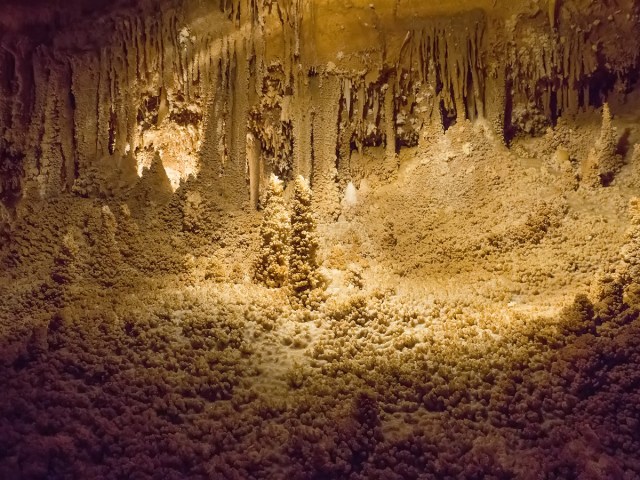
In the early 1900s, one of the country’s most spectacular underground sites was discovered by accident under the ranch lands of Sonora, Texas, about halfway between San Antonio and Big Bend National Park. Since then, the Caverns of Sonora have become renowned for their otherworldly array of mineral deposit formations, including imposing stalactites, intricate stalagmites, and delicate, shimmering calcite crystals. Perhaps the most famous among the many natural sculptures is a pair of symmetrical fishtail helictites known as the Butterfly. In 1966, the cave system was made a National Natural Landmark. With about 95% of its formations still growing, the site, while open to the public, remains protected.
More from our network
Daily Passport is part of Inbox Studio, which publishes content that uplifts, informs, and inspires.






